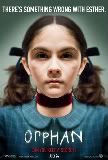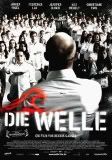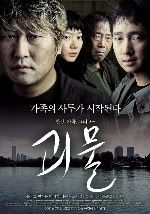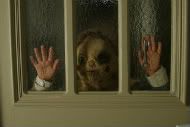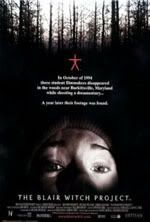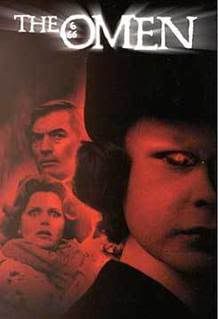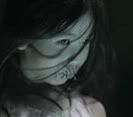
Monday, 21 September 2009
Sunday, 6 September 2009
Barthes and his Codes

Roland Barthes was a thinker closely associated with Levi-Strauss. he came to the conclusion that narratives could be understood in terms of codes.
The three main codes were enigma, action and cultural. All these codes interlinked. Enigmas were snares which hooked the audience into the film. Although it is not always obvious to the audience why enigmas occur (such as why is David so interested in Michael) they enjoy trying to discover the solutions.
Action codes were caused by the characters in the film who are seeking answers or are seeking to 'act'. The audience enjoy action codes since they propel the narrative forwards. For example Michael follows David's gang to their cave and what he discovers there leads to his subsequent problems. This leads to the involvement of his brother and the Froggs and to his romance with Star.
Cultural codes are things which the audience as a group or society share with the film. For example the idea of vampires is a shared idea which helps us with the film. So too is the rebellious behaviour of the youngsters. Our society has similar problems. Cultural codes are very similar to the verisimilar idea in Classic Narrative Formula.
Dawg get your Claude Levi Strauss On :)

Levi-Strauss was known as part of the Structuralist school of thinkers. One of the main parts of his theory was the concept of BINARY OPPOSITIONS
Strauss argued that we can understand many things in this way. This theory is often applied to understanding narrative in cinema. It is a good theory for understanding genre in cinema.
So for example if we were to take the example of The Lost Boys we can explore binaries within the film and then look at how they fit or don't fit when The Lost Boys is placed within the Horror genre and the Vampire sub-genre.
In the Lost Boys we have good forces in opposition to evil forces. There is also the chaos of Santa Carla and the order which the Frogg Bros try to restore. There are other binaries such as those between the lure of the otherness and revulsion at the otherness. There is the also the opposition of Night to Day and between youth and older age.
It is interesting that Binaries compliment Classic Narrative Formula in the sense that CNF is concerned with equilibrium and disequilibrium. For Strauss these are binary oppositions!
Wednesday, 10 June 2009
Friday, 27 March 2009
Sunday, 22 February 2009
Whisky Street

This extract would be suitable for the medium of film for several reasons. Firstly it suggests to me several very visual ideas such as the central character/narrator who has lost everything 'documents, passport, licence...' and even the will to live when he tells us 'there was nowhere left to run, no way out...'. He is a character who with proper casting, my young target demographic could connect with and I feel I could make a film which would engage them in his dilemmas which we read about in the extract when he tells us about the revolver in his coat pocket.
Secondly the location of Whisky street with its vividly described colours and noises (garish purple bruises and sirens) would be ideal in the medium of film and could be created to stunning effect with green screen technology in the same style as Frank Miller's Sin City. This again would help target my student demographic.
There are other compelling reasons for making this text into a film including the fact that screen adaptations of novels have usually always been succesful in cinema. Also because I feel this film/text lends itself to two very succesful genres in cinema, namely Horror and Thriller. This intertextual mix would be appealing to the demographic in the same way as Fincher's Seven has been. The horror elements are suggested by the genre markers such as the terrible place - Whisky St and the 'ghostly footsteps' and of course the night-time setting. On the other hand the man faced with a situation he does not understand suggests one of the key markers of the Thriller. It might be possible to introduce a double crossing female into my film thus giving the movie a Film Noir aspect.
I see this film attracting a young student demographic 15- 25 who are the most common cinema goers and who are keen on the thriller/horror mix. The film I intend to make would undoubtedly be a multiplex movie with action and enigmas which would seek to please its target audience with visceral and cognitive pleasures. It being a multiplex movie there would be a need for a good sized budget, a 15 certificate and perhaps an A list star to generate the kind of profits expected from multiplex screenings.
The film would as I have said, rely somewhat on a major star to bring alive the narrator of the text. Discussions with my Casting Director would centre on Josh Hartnett as one possibility or Mark Ruffalo (pictured above) or Colin Farrell. The casting of any one of these established actors with their distinctive features would help the mise en scene of the battered and troubled narrator and his life on Whisky street. A blonde Ann Hathaway or Jessica Alba would broaden the draw of the film for its audience and would also be considered in casting. Of course their availability and willingness to undertake the progress plus their fee would have to be taken into consideration.
The description of Whisky Street in the extract is so evocative and precise with its 'dark sheets of rain' that the only sensible option in terms of location would be the use of a soundstage with green screen and post production CGI to recreate it. My locations manager and producers would be looking for a studio with these facilities in order to maximise complete control over the colours and types of rainfall and the camera work needed to visualise the moment in the text which describes the gun. the text also mentions a good deal of foley (even the noise of the gun chamber is mentioned) so my Sound Editor would benefit from a controlled environment in which to record these fx.
My Cinematograher and I would need to have lengthy discussions about the look of my film. As I have suggested horror combined with film noir there is a need to film with a view to using a lot of shadows and light (as Hitchcock did with Psycho or like the noir films of Nicholas Ray). Therefore the possibility of shooting in grainy b/w should be discussed or even de-saturated colour. I would of course be looking for 35mm standard which would be pleasurable to my audience as would be the b/w.
The music for the film most try to create for the young demographic the mood and feeling of Whisky Street and the troubled narrator. This being the case I would discuss with my Music Director the need for a dark electronic, original score and even the possibility of a signature piece of music which help the audience understand the darkness of the street. Craig Armstrong or Thomas Newman (who has worked closely with Sam Mendes on Jarhead and Revolutionary Road) are two composers capable of sonically conveying the darkness of Whisky street with 'its filth and grease...'
I would like to explore now some of the Technical and Cultural Codes for the opening shots of this movie.
Without doubt the location is one of the stars of the movie and integral to its success with the target audience. It has to be gritty and powerful and memorable to the audience. Therefore my first shot will need to be a panning wide of the street using green screen as indicated above. The right to left pan in moderate speed will attept to convey the darkness and danger of the street to the the audience presenting them with a pleasurable sense of fear and anticipation. The shot will be at eye level possibly the view of a pedestrian. Sheets of rain will seem almost white against the purple sky with other aspects of mise en scene present such as demolished houses, burnt out cars, neon lit clubs etc. This combined with the signature music mentioned above will anchor for the audience the sheer presence of this location and its dangers.
The second shot will be a continuaion of the pan which will grind to a halt at our narrator slumped in the tunnel wearing a large shapeless coat in dark colours suggesting he is powerless and hopeless. The pan will then zoom to a midshot of our anti hero as he contemplates his future, the rain driving into his face. The fx of rain and sirens and shouts will then be heightened for the audience anchoring a sense of his inner torment and need for escape. the signature music will then rise to a crescendo as he fumbles for his old rusted gun in the shadowy low key lighting.
Shot three will be a choker close up of the gun ( a special set up will be needed here as the audience is taken into one of the chambers and can see the bullet there) the noise of the chamber can be heard. This shot will be angled down on thebullet anchoring the sense that it will be fired soon.
Shot four will zoom out from the man and tilt slightly upwards in the direction of the tunnel entrance. The mise en scene here will be of a tunnel like the opening of hell, dark and foreboding with the foley of 'ghostly' noises approaching. Here the signature music will switch dramatically to a horror chord anchoring for the audience along with the dark shadowy lighting with expressionistic colourings, the sense of danger to the anti-hero narrator. Sound editing will be crucial in the creation of the otherness.
Tuesday, 17 February 2009
Revolutionary Road the novel is better!

I thoroughly enjoyed the Richard Yates' novel so I was looking forward to the film. It was a fairly good film but put against other Oscar contenders such as Benjamin Button and Slumdog Millionaire, it felt pretty ordinary. One of the things I noticed was how few people were in the film! Although the central parts were convincing you couldn't help but think that what they were worried about (loss of their dream and ideals) wasn't worth getting really worked up about. Oh and the amount of smoking was unreal as was the amount of time pouring drinks!
Sunday, 15 February 2009
Sunday, 18 January 2009
believing is seeing

El Orfanato/The Orphanage directed by Juan Antonio Bayona and produced by Guillermo del Torro in 2007/8, is in many ways a classic horror movie which I believe provides an interesting differential reading in terms of Audience, Narrative and Representations.
Despite being a foreign language film, The Orphanage was successfully released in America (Box Office $8m) and Britain (£1.5m) in both multiplex and art house cinemas. It was subsequently released onto DVD format in 2008. There are in my opinion several crucial factors in its success with its targeted demographic which would include the 15-25 student range but might also be extended for reasons outlined below, to include a broader 29-40 range.
Firstly although intertextual in some ways, the film is clearly of the popular Horror genre. Indeed it can be argued that it is a film which uses very traditional horror elements as opposed to CGI and gore to entertain and please its audience. There are ghostly noises, night time sequences a creaking old house as the terrible place and many more dry, psychological horror elements. It contains many enigma pleasures for the audience such as the mysterious Tomas, the disappearance of Simon and intriguing female characters such Benigna and Aurora. Significantly the film also uses children as the otherness or more specifically as connected somehow to the otherness.
This is an aspect of the Horror genre which would help target and please an audience as it has done historically in cinema. Films such as Village of the Damned, The Shining, The Omen and The Exorcist have all been successful in this way combining children with otherness and the punishment of adults. Furthermore the film is similar to The Others/2001 (also made by a Spanish speaking director) and this was successful with cinema goers. The film’s central idea – a mother’s desire to be reunited with her missing child is universally verisimilar to audiences and can be seen often in cinema, most recently in Clint Eastwood’s Changeling.
A second key factor in our discussion of Audience is the recent success of foreign language films, especially horror films, with American and British cinema goers. Asian cinema provides an excellent example of this with films like The Grudge, Ring, The Eye and The Host.
However it is also true to say that in recent years Spanish and Mexican film makers have had a great impact on Audiences. Film makers such as Cuaron (Children of Men/Harry Potter), Inarritu (21 Grams) and especially Del Toro (Pan’s Labyrinth/Hellboy) are all leading Directors. So it is true to say that audiences would be interested in their products. The Orphanage was sold to audiences with the tag line ‘From the makers of Pan’s Labyrinth’ showing the pulling power of del Toro. Indeed the two films have many similarities which would appeal to the targeted demographic, using children and other worlds as the centre of their stories.
I would also argue that broadly speaking Spanish speaking film makers also present females as very powerful constructs in their film which is true of The Orphanage with the central character of Laura and I feel this would help strengthen the film’s attraction to a young, modern audience who find less stereotypical female constructions more appealing in films.
A differential reading of The Orphanage also reveals a good deal about its narrative aspects. I believe that the Classic Narrative Formula can be applied to the film. As I have mentioned earlier the film has a strong verisimilar world. The loving couple setting up home with their adopted/ill son is something which a 15 -39 audience would immediately recognise as would the old orphanage building with its many secrets. Laura’s subsequent battle to recover her missing son and the lengths she will go to be reunited with him are all verisimilar.
In line with CNF the film can be divided into three acts or sections. The Equilibrium is established at the start of the film with the brightly lit garden full of floating flower seeds and the warm foley noises of children at play. The hide and seek scene is shot in a wide with the house in the background and the whole scene anchors a feeling of happiness.
There are potentially several moments of disequilibrium for the Classic Narrative. The first is with a phonecall to the orphanage which one of the ladies takes with her back to the camera. In a slow zoom we learn that Laura is to leave. This action could be said to be the start of Laura’s struggle to restore happiness.
Another possible disequilibrium is the argument between Laura and her adopted son, Simon. Simon rebukes his mother for not telling him the truth about their relationship. This then leads onto to his disappearance and the body of the film. However it is the disappearance of Simon which is the must obvious moment of disequilibrium as this in turn causes the exploration of the house and the revelation of its dark secrets. This proves to be highly pleasurable for the demographic as in engages them in the unravelling of the film’s enigmas.
The restoration of equilibrium comes with the discovery of Simon’s body and Laura’s decision to take her own life thus reuniting her with her son and her murdered friends. This although a depressing ending is signalled by strong light from the lighthouse and uplifting music so in a sense it provides a decisive and satisfying narrative closure for the audience.
Undoubtedly the film works in a cause and effect sequence. The removal of Laura from her friends creates a mystery about what happened to them and when Simon goes missing a series of events are caused which results in Laura’s discoveries about what becomes a very menacing house (throughout the disequilibrium section the house is often shot at a low angle in low key lighting).
A differential reading of narrative of The Orphanage also suggests that the film can be understood in terms of Propps morphology or 31 narratemes as they are sometimes called. The 1st and 2nd narratemes are clearly evident – someone goes missing and the hero is warned. These obviously apply to Laura and the disappearance of Simon. As is suggested in Propps later narratemes the hero chooses action - we see Laura act decisively in her pursuit of the truth even to the extent that her husband leaves her alone in the terrible place as the final girl.
It is interesting when applying Propp’s 31 narrateme – hero ascends the throne – as in a sense Laura has ascended but to the place of the dead with the murdered children. However she is shot sitting with the children surrounding her which suggests her high status to the audience.
As stated earlier the film successfully engages and pleasures its audience with many hermeneutic codes. There is an abundance of Barthian snares especially in the equilibrium and disequilibrium sections of the film. Who are Simon’s friends? What is his illness? Where has he gone? Who are Benigna and Tomas? What is it that Aurora sees during the séance? Furthermore Laura’s dramatic discoveries in the shed and her invitation to the ghosts to play, are exciting action codes for the demographic.
Laura is a fascinating female construct. She clearly is stereotypical in some aspects of her portrayal. She is a doting mother caring for her son. This is underlined by her comforting him during the night with stories. In this sense she fits with the traditional construction of females in American cinema as either mothers or objects.
However it quickly appears that Laura is brave and perceptive. We see this in her tackling of Benigna and her refusal to rule out any possibility that her son may still be alive. Her determination is cleverly contrasted with her husband’s surrender and departure from the house. It is also interesting to note that her journey through the film throws up many physical obstacles. Her hand is smashed in the door, her leg is broken, she climbs into an oven and is covered in flour (making her ghostlike) as she discovers body parts. There is something of an action hero about Laura. Indeed her decision to destroy herself at the end to be with her son and old friends goes beyond usual action hero endings. This reading of Laura’s character shows her in many ways as an archetypal construction which is enjoyable for a modern audience.
Furthermore the film has three other strong and varied female constructs in Benigna, Aurora and Pilar and these females all present different attitudes towards Laura’s crisis. Benigna is perhaps the most stereotypical in terms of the horror genre as she is part otherness and killer. Her construction is complicated however by the fact that she too is a mother who lost a child. Aurora is also connected with the otherness in the sense that she is a paranormal psychic. The idea that most psychics are female could be argued but Aurora’s words of guidance to Laura ‘people say seeing is believing but it’s the other way round’ become very true as the narrative unfolds. Pilar offers the audience a female authority figure as she is connected with the Police and the investigation into Simon’s disappearance. She is rational and compassionate as is seen in her exchanges with Laura in hospital. However she is also filmed in a two shot with Carlos underlining her disbelief in the psychic powers displayed by Aurora.
I believe it is true to say that the film presents a range of powerful and engaging female constructs which the demographic would find pleasurable and to an extent verisimilar. It is possible to argue that the film presents a matriarchal world as opposed to a patriarchal one which is usually the case in a male dominated cinema industry.
However one could also argue that all the females in the film are engaged in the discovery of Simon who is a male. Indeed Laura is partly to blame for his death and destroys herself as a kind of atonement for his death. Therefore there is an argument that the females ultimately are organised around a male. These readings all amount to a very interesting study of El Orfanato.
Sunday, 4 January 2009
Che Part 1

I was looking forward to this movie starring the amazing Benicio Del Toro and directed by one of the most intriguing directors of modern cinema - Steven Soderbergh. The film is shot in colour and b/w showing Che the soldier and Che the politician. Some of it is amazing such as the battle sequence at the end which reminded me of Ken Loach's film about the Spanish civil war, Land and Freedom. I have to admit that some of the film was hard to follow in terms of the many characters and it also lacked some od Soderbergh's usual style. Overall though the film is held together by the stunning central performance of Del Torro.
Subscribe to:
Comments (Atom)





